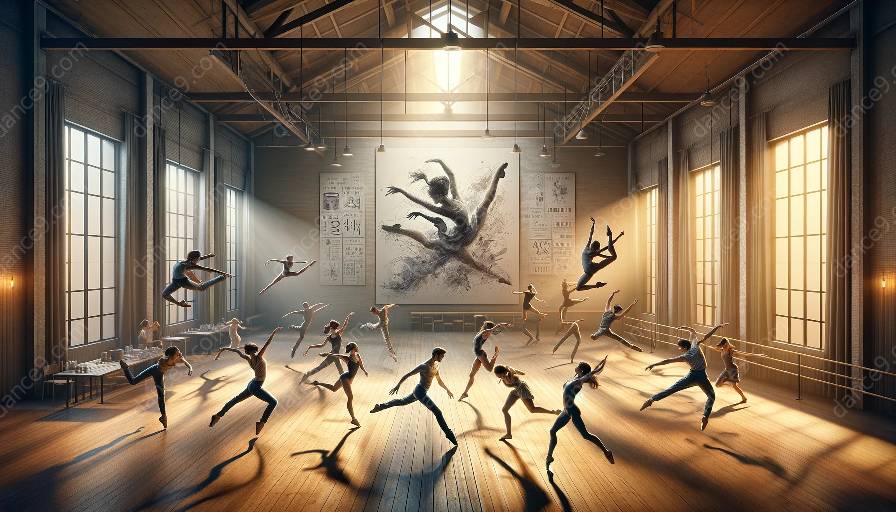Creating dance choreography is an intricate and captivating process, especially when it comes to the relationship between movement and music. The evolution of choreographic techniques in response to different musical genres reveals how dancers and choreographers adapt and innovate based on the characteristics of the music they are translating into movement.
The Synergy of Choreography and Music
Choreography and music have an intertwined relationship that has evolved over centuries. Dance, as an art form, has been closely connected to music since its inception. The rhythm, tempo, melody, and emotions conveyed by music serve as inspiration and a guide for choreographers in creating movement that complements and enhances the musical experience.
When exploring how choreographic techniques evolve in response to different musical genres, it's essential to consider how the nuances of each genre influence the choreographic process. From classical ballet to hip-hop, from contemporary dance to traditional folk dances, the stylistic differences in musical genres present unique challenges and opportunities for choreographers.
Classical Ballet and Musicality
Classical ballet has a long-standing tradition of precise and intricate choreography that is deeply intertwined with classical music compositions. The formality and structure of classical ballet technique are often designed to complement the refined and elegant nature of classical music. Ballet choreographers utilize techniques like pointe work, pas de deux, and intricate footwork to align with the musical dynamics, utilizing movements that mirror the orchestration and emotional landscape of the music.
Contemporary Dance and Eclecticism in Movement
Contemporary dance, on the other hand, embraces a wide range of musical genres, from experimental electronic music to alternative rock and everything in between. This versatility allows choreographers in contemporary dance to explore an eclectic range of movements and choreographic techniques that respond to the diverse musical landscapes. The fluidity and expressive nature of contemporary dance techniques often mirror the evolving and dynamic qualities of contemporary music genres, fostering a rich dialogue between movement and music.
Urban Dance and Musical Syncopation
Urban dance styles, including hip-hop, street, and breakdancing, are deeply rooted in urban music genres such as hip-hop, R&B, and funk. Choreographic techniques in urban dance often revolve around syncopated rhythms, isolation movements, and expressive gestures that mirror the rhythmic complexity and groove of urban music. The evolution of these dance forms has been closely intertwined with the evolution of urban music, resulting in a dynamic and ever-changing relationship between dance and music.
Folk Dances and Cultural Expression
Traditional folk dances, representing diverse cultures and traditions, are deeply connected to their indigenous musical genres. Choreographers and dancers who work with folk dances often draw inspiration from the rhythmic patterns, melodic motifs, and cultural narratives embedded in the music. The choreographic techniques utilized in folk dances aim to authentically reflect the cultural and historical context of the music, preserving and evolving traditional movement vocabularies with each generation.
Evolution and Cross-Pollination
As musical genres continue to evolve and cross-pollinate, so do choreographic techniques. The emergence of fusion genres and interdisciplinary collaborations between choreographers and musicians have led to innovative choreographic expressions that transcend traditional boundaries. Contemporary choreographers are increasingly exploring new interdisciplinary approaches, integrating technology, multimedia, and diverse musical influences to push the boundaries of dance and choreography.
Conclusion
The evolution of choreographic techniques in response to different musical genres is a dynamic and ongoing process that reflects the ever-changing landscape of music and dance. The synergy between choreography and music is a testament to the profound impact that music has on inspiring and shaping movement, and vice versa. By understanding and appreciating this relationship, we can gain deeper insights into the cultural, artistic, and creative forces that drive the evolution of dance choreography.






































